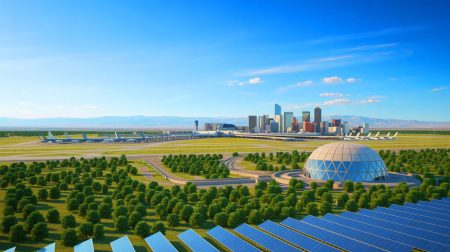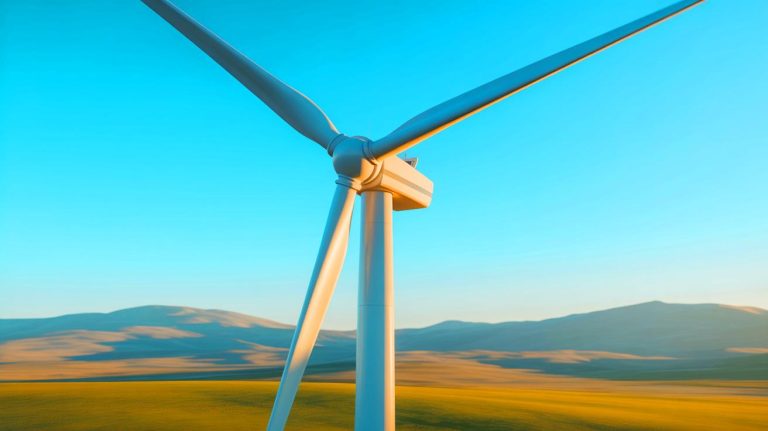| IN A NUTSHELL |
|
In recent years, significant advancements in wind turbine technology have challenged long-held beliefs about what constitutes the most efficient design. Traditionally, the three-bladed rotor was viewed as the gold standard for utility-scale wind turbines. However, a quiet revelation from Envision Energy suggests that two-bladed turbines may be ready for a comeback. Their latest prototype has demonstrated remarkable performance metrics, matching the efficiency of its three-bladed counterparts in real-world conditions. This breakthrough could potentially reshape the landscape of wind energy production, offering a new avenue for cost-effective and efficient renewable energy solutions.
A Decade of Refinement
Envision Energy’s journey to revitalize the two-blade wind turbine has been a decade-long endeavor. Originating from the 3.6-megawatt “Game Changer” model tested in Denmark in 2012, the two-blade prototype has undergone substantial enhancements. Engineers have integrated a high-speed doubly-fed induction generator, modular nacelle components, and a lightweight construction. These changes were rigorously tested on an industry-first multi-degree-of-freedom loading rig before field deployment.
According to Lou Yimin, Senior Vice-President of Envision, the success of the long-term prototype run demonstrates that the company has overcome the issues of excessive system vibration and load imbalance that plagued earlier two-blade designs. While the specific details of their damping algorithms and hub geometry remain undisclosed, public data indicates that modern control systems can maintain the fast-spinning two-blade rotor within today’s grid-code limits for torque and power quality. This achievement would have been unimaginable for commercial developers fifteen years ago.
What Two Blades Can Still Offer
Aerodynamic research reveals that transitioning from one to two blades improves efficiency by approximately 6 percent. In contrast, adding a third blade only yields an additional 3 percent improvement. These findings highlight the potential for two-blade designs to offer viable efficiency gains with reduced complexity.
According to the National Renewable Energy Laboratory (NREL), balance-of-system (BOS) costs constitute roughly 30 percent of the capital expenditures needed to install a land-based wind plant. These costs include permitting, labor, materials, foundations, electrical infrastructure, and tower installations. Although eliminating one blade does not drastically reduce these expenses, it helps lower material costs and simplifies logistics. The aerodynamic penalty also appears manageable, as the Envision rotor operates at higher rotational speeds, harvesting as much energy per swept area as nearby three-blade machines.
If this performance scales to multi-turbine arrays, two-blade designs could become a practical alternative for project developers in regions with logistical challenges or those seeking to reduce capital expenditures.
Looking Ahead
While Envision has not yet announced a commercial launch date, the prototype faces the ultimate test of delivering consistent returns over a full maintenance cycle and across diverse sites. Investors will likely scrutinize how drivetrain bearings, yaw systems, and tower structures withstand the unique loading conditions imposed by a two-blade rotor.
Nevertheless, the 500-day data set marks the first time in decades that a two-blade machine has shown utility-scale availability and energy output in real-world conditions. This success does not signal the end of the three-blade rotor, which remains the conservative choice due to its smoother yaw behavior and proven durability. However, the Envision prototype challenges the traditional trade-off between mechanical simplicity and aerodynamic performance, suggesting that with modern technology, two-blade designs could become a competitive option in the wind energy sector.
The advancements in two-bladed wind turbine technology present an exciting opportunity for the future of renewable energy. By reducing material and logistical costs while maintaining efficiency, two-blade designs could become a practical choice for many projects. As the industry continues to explore these possibilities, the question remains: will two-blade wind turbines redefine the standard for cost-effective and efficient energy production in the coming years?
Did you like it? 4.5/5 (26)







Amazing! Does this mean we’ll see two-blade turbines in every wind farm soon? 🤔
Is this breakthrough applicable to offshore wind farms as well?
What about noise levels? Are two-blade turbines quieter or louder than three-blade ones?
This is great news! Thanks for sharing. 🌿